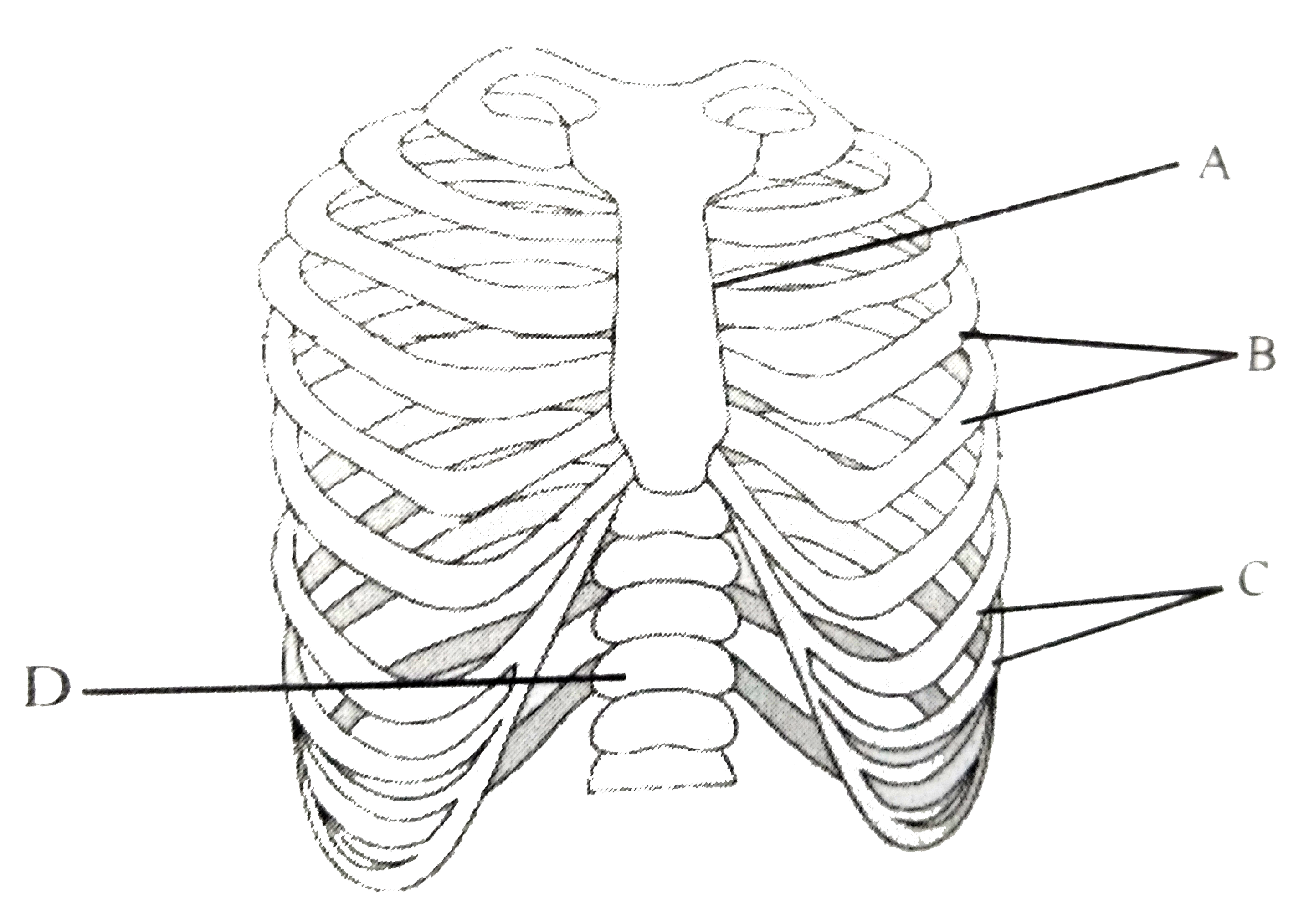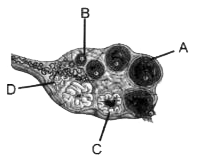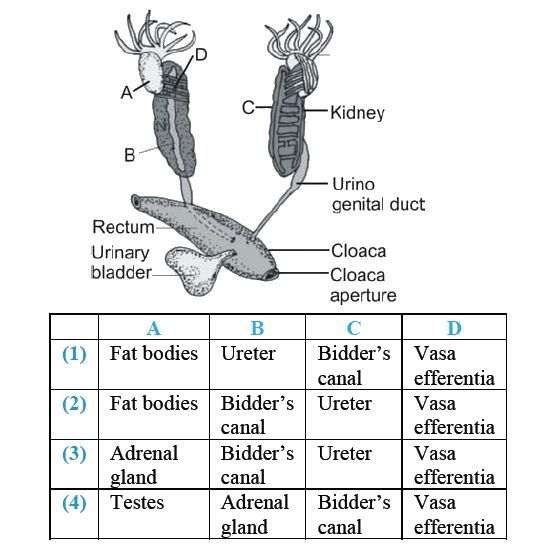PhylumLevel of organisationDigestive systemRespiratory systemAschelminthesACompleteAbsentEchinodermataOrgan systemBPresentPlatyhelminhesOrganIncompleteCAnnelidaOrgan systemIncompleteD
Select the option with correct identification of A, B, C, and D.
A - organ, B - Complete, C-Present, D- Absent
A - organ system, B - Complete, C - Absent , D - Absent
A - organ system, B - Incomplete , C- Absent, D - Present
A - organ system, B - Incomplete , C - Present , D - Absent
The correct Answer is:B
To solve the question, we need to identify the correct options for A, B, C, and D based on the characteristics of the specified phyla. Let's break it down step by step:
Step 1: Identify A (Level of Organisation for Aschelminthes)
- Aschelminthes, also known as pseudocoelomates, exhibit an organ system level of organization.
- Conclusion: A = Organ system
Step 2: Identify B (Digestive System for Echinodermata)
- Echinodermata possess a complete digestive system, which means they have a distinct mouth and anus, allowing for a more efficient digestion process.
- Conclusion: B = Complete
Step 3: Identify C (Respiratory System for Platyhelminthes)
- Platyhelminthes, or flatworms, do not have a specialized respiratory system. They rely on diffusion through their body surface for gas exchange.
- Conclusion: C = Absent
Step 4: Identify D (Respiratory System for Annelida)
- Annelids, such as earthworms, also lack a specialized respiratory system. They respire through their moist skin, which allows for gas exchange directly with the environment.
- Conclusion: D = Absent
Final Summary:
- A = Organ system
- B = Complete
- C = Absent
- D = Absent
Correct Identification:
Thus, the correct option for A, B, C, and D is:
- A: Organ system
- B: Complete
- C: Absent
- D: Absent
Answer:
The correct identification of A, B, C, and D is:
- A = Organ system
- B = Complete
- C = Absent
- D = Absent
- Aschelminthes, also known as pseudocoelomates, exhibit an organ system level of organization.
- Conclusion: A = Organ system
- Echinodermata possess a complete digestive system, which means they have a distinct mouth and anus, allowing for a more efficient digestion process.
- Conclusion: B = Complete
- Platyhelminthes, or flatworms, do not have a specialized respiratory system. They rely on diffusion through their body surface for gas exchange.
- Conclusion: C = Absent
- Annelids, such as earthworms, also lack a specialized respiratory system. They respire through their moist skin, which allows for gas exchange directly with the environment.
- Conclusion: D = Absent
- A = Organ system
- B = Complete
- C = Absent
- D = Absent
Thus, the correct option for A, B, C, and D is:
- A: Organ system
- B: Complete
- C: Absent
- D: Absent
The correct identification of A, B, C, and D is:
- A = Organ system
- B = Complete
- C = Absent
- D = Absent
Similar Questions
Knowledge Check
The given figure represents the human digestive system. Identify A,B,C D and E.
 AA-Parotid gland, B-Lvier, C-Pancreas, D-Caecu, E-Vermiform appendixBA-Parotid gland, B-Pancereas, C-Liver, D-Aecum, E-Vermiform appendixCA-Parotid gland, B-Caecum, C-Pancreas, D-Liver, E-Vermiform appendixDA-Parotid galnd, B-Liver. C-Caecu, D-Pancreas,E=Vermiform appendix
AA-Parotid gland, B-Lvier, C-Pancreas, D-Caecu, E-Vermiform appendixBA-Parotid gland, B-Pancereas, C-Liver, D-Aecum, E-Vermiform appendixCA-Parotid gland, B-Caecum, C-Pancreas, D-Liver, E-Vermiform appendixDA-Parotid galnd, B-Liver. C-Caecu, D-Pancreas,E=Vermiform appendix
Amongst labels a−d of human urinary system, select option with correct identification and characteristics/function

View SolutionThe figure shows ribs and rib cage labelled with A,B,C and D. select the option which gives correct identification :−

View SolutionThe figure below shows development of follicles (A, B, C, D). Select the option giving correct identification together with its funcition?

View SolutionOrgan system level of organisation appeared for the first time in the members of
View SolutionThe figure shows a diagrammatic view of human respiratory system with labels A, B, C and D. Select the option which gives correct identification and main function and/ or characteristic

View SolutionFollowing is the diagram of the male reproductive system of frog. Select the correct set of names labelled A, B, C and D.

View SolutionMatch the following list of animals with their level of organisation.
Division of LabourAnimalA.Organ leveli.PheretimaB.Cellular aggregate levelii.FasciolaC.Tissue leveliii.SpongillaD.Organ system leveliv.Obelia
Choose the correct match showing division of labour with animal example.
View Solution

